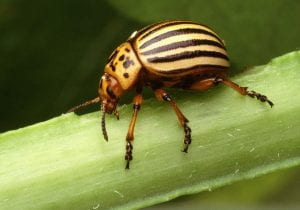
by Susan Ndiaye, Community Horticulture Educator
Signs of spring abound! Bird songs fill the air. Buds on the trees are starting to unfurl. New shoots are breaking through the soil. And flowers are beginning to bloom!
Here are some of the flowers to look out for as you venture outside for a breath of fresh air.
When most people think of maple trees, flowers aren’t the first thing that comes to mind. Red maples are native to the eastern United States and happen to be one of the first trees to flower in the spring. Their bright pink to red flowers result in the production of thousands of winged fruits called samaras, colloquially referred to as helicopters. After ripening on the trees for several weeks they will fill the air and litter the ground.

Although many people equate the yellow blossoms of the forsythia with the beginning of spring, the forsythia is not native to New York; it actually native to eastern Asia. This fast growing shrub is a favorite among homeowners, because it is tolerant to deer, resistant to Japanese beetles, and rarely has disease problems. If you are looking for a native alternative to forsythia, try spicebush (Lindera benzoin). This medium sized multi-stemmed shrub has fragrant yellow-green flowers in early spring and supports 12 species of butterflies and provides berries for the birds.


One of the many joys of spring is the emergence of all the spring flowering bulbs. Some of them are already blooming: snowdrops, crocuses, daffodils (my favorite flower!). Despite its sometime unsightly appearance, make sure you leave the foliage alone until it turns yellow and dies back. This allows the leaves of the plant to produce food through photosynthesis. This food is stored in the bulb and will be used to produce even more beautiful flowers next spring!
Hellebores are also flowering! This evergreen herbaceous perennial is native to Turkey, but does well here in Orange County. It grows well in full or partial shade and has beautiful white to pink to purple flowers that bloom in late winter into early spring. Hellebores are rarely damaged by deer and as they are evergreen, after their flowers fade, they make an attractive ground cover



As you are out enjoying the sunshine, what other signs of spring do see or hear or smell?
Thanks to all of the Master Gardener Volunteers who provided their thoughts and photos for this post!




